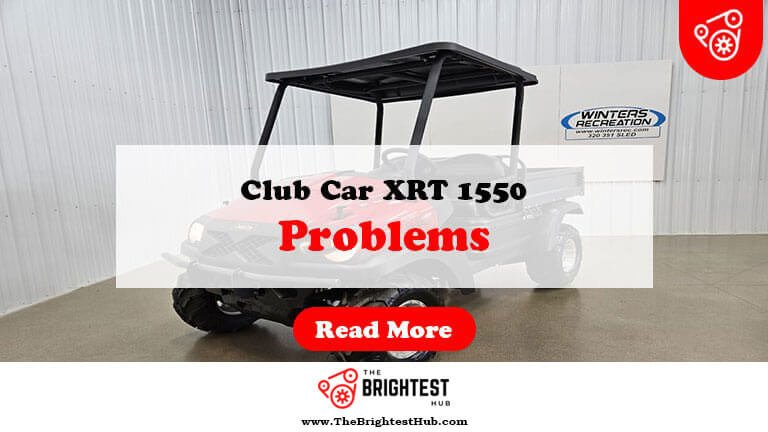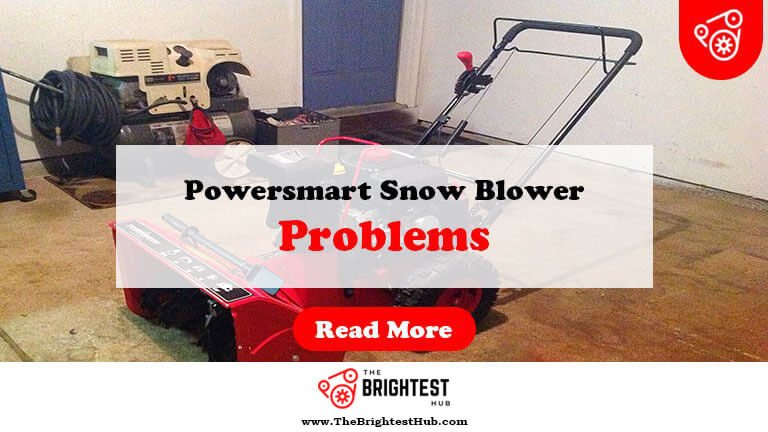Jeep Liberty 3.7 Engine Problems: Troubleshoot & Fix
Jeep Liberty 3.7 engines commonly face issues like excessive oil consumption, overheating, and timing chain failures. These problems can lead to reduced performance and costly repairs.
The Jeep Liberty 3. 7 engine has garnered a reputation for its durability, but it is not without its flaws. Many owners report persistent engine troubles that can disrupt daily driving. Common complaints include oil leaks and engine misfires, which often stem from worn components.
Regular maintenance and prompt attention to warning signs can mitigate some issues. Understanding these potential problems can help owners make informed decisions. Identifying symptoms early allows for timely repairs, ultimately prolonging engine life. Awareness of these challenges ensures a smoother driving experience and protects your investment in a Jeep Liberty.
Introduction To Jeep Liberty 3.7 Engine Issues

The Jeep Liberty, a compact SUV, has gained attention for its performance and durability. However, the 3.7 engine has faced several issues. Understanding these problems is essential for owners and potential buyers.
Brief History Of Jeep Liberty
The Jeep Liberty debuted in 2001. It replaced the Jeep Cherokee. The Liberty offered a blend of off-road capability and comfort. It quickly became popular among SUV enthusiasts.
- 2001: First generation launched.
- 2008: Second generation introduced.
- 2012: Production ceased.
Throughout its run, the Jeep Liberty maintained a loyal fan base. Its rugged design appealed to many drivers.
Popularity Of The 3.7 Engine
The 3.7L V6 engine powered many Jeep Liberty models. It provided decent horsepower and torque for off-road adventures. Many drivers appreciated its reliability.
- Engine size: 3.7 liters.
- Horsepower: 210 hp.
- Torque: 235 lb-ft.
Despite its strengths, the 3.7 engine has common problems. Owners should be aware of these issues to ensure smooth performance.
| Common Issues | Description |
|---|---|
| Oil Leaks | Frequent oil leaks from engine seals. |
| Overheating | Engine may overheat due to coolant issues. |
| Timing Chain Problems | Timing chain can stretch, causing performance issues. |
Understanding these Jeep Liberty 3.7 engine issues helps drivers maintain their vehicles. Awareness leads to better care and longevity.
Common Problems With The 3.7 Engine
The Jeep Liberty 3.7 engine has several common issues. Understanding these problems helps owners maintain their vehicles. Here, we explore the main concerns that arise with this engine.
Cooling System Failures
The cooling system in the 3.7 engine often fails. This leads to overheating and engine damage. Key issues include:
- Faulty radiator
- Worn-out water pump
- Leaking hoses
Overheating can cause severe engine problems. Regular checks can prevent costly repairs.
Valve Seat Issues
Valve seat problems are another common concern. This affects engine performance and efficiency. Symptoms include:
- Loss of power
- Rough idling
- Increased exhaust emissions
Repairing valve seat issues can be expensive. Early detection is vital to avoid major damage.
Oil Leaks
Oil leaks are frequent in the 3.7 engine. They can lead to low oil levels and engine wear. Common leak sources include:
- Valve cover gasket
- Oil pan gasket
- Front and rear main seals
Regular oil checks can help spot leaks early. Addressing these issues quickly saves money.
Symptoms Of A Failing 3.7 Engine
Recognizing the symptoms of a failing 3.7 engine can save you from costly repairs. Early detection is key. Below are common signs that indicate engine trouble.
Overheating
Overheating is a critical symptom of engine failure. Watch for these signs:
- Temperature gauge reading high
- Steam or smoke from the hood
- Coolant leaks under the vehicle
Overheating can damage engine components. Regularly check coolant levels and watch for leaks. Ignoring this issue may lead to severe engine damage.
Loss Of Power
A noticeable loss of power can indicate engine problems. Symptoms include:
- Sluggish acceleration
- Difficulty maintaining speed
- Unresponsive throttle
This loss can be frustrating. It often results from issues like fuel delivery problems or a failing transmission. Regular maintenance can help prevent this symptom.
Unusual Noises
Listen for unusual noises coming from the engine. Common sounds to note include:
- Knocking or tapping noises
- Hissing sounds
- Grinding or squealing
These sounds can indicate serious issues. They may point to worn-out parts or insufficient lubrication. Address these noises quickly to avoid further damage.
Diagnosing The 3.7 Engine Problems
Diagnosing the 3.7 engine problems in a Jeep Liberty can be challenging. Understanding the right tools and steps is crucial. Proper diagnosis helps in identifying issues early.
Diagnostic Tools Needed
- OBD-II Scanner: Reads error codes from the engine.
- Multimeter: Tests electrical components and connections.
- Compression Tester: Checks engine cylinder pressure.
- Vacuum Gauge: Measures intake manifold vacuum.
- Torque Wrench: Ensures correct bolt tightness.
Step-by-step Diagnosis Process
- Check Engine Light: Start with the OBD-II scanner. Note any error codes.
- Inspect Visual Components: Look for leaks, damaged wires, or loose connections.
- Test Battery Voltage: Use the multimeter. Ensure the battery is charged.
- Compression Test: Use the compression tester on each cylinder. Compare results.
- Check Fuel Pressure: Use a fuel pressure gauge. Ensure proper fuel delivery.
- Vacuum Reading: Connect the vacuum gauge. Look for normal readings.
- Examine Spark Plugs: Remove and check for wear or damage. Replace if needed.
- Final Steps: Clear any codes and test drive the vehicle. Monitor for issues.
Following these steps simplifies the diagnosis. Early detection saves money on repairs. Always consult a professional if unsure.
Troubleshooting The Cooling System
The cooling system in the Jeep Liberty 3.7 is vital for engine health. Overheating can lead to severe damage. Regular checks can prevent costly repairs. Here’s how to troubleshoot common issues.
Checking The Thermostat
The thermostat controls coolant flow. If it fails, your engine may overheat. Follow these steps to check it:
- Start the engine and let it warm up.
- Feel the upper radiator hose. It should warm up.
- If it stays cold, replace the thermostat.
Signs of a faulty thermostat include:
- Temperature gauge fluctuates.
- Engine overheats.
- Coolant leaks.
Inspecting The Radiator
The radiator dissipates heat from the engine. A clogged or damaged radiator can cause overheating. Check for:
- Dirt or debris on the exterior.
- Leaks or cracks.
- Corrosion inside.
Clean the radiator with these steps:
- Turn off the engine and let it cool.
- Remove the radiator cap.
- Flush with water or a radiator cleaner.
Ensure coolant flows freely through the radiator.
Fixing Common Leaks
Leaks can occur in several areas of the cooling system. Here are common leak points:
| Leak Location | Signs of Leak |
|---|---|
| Hoses | Wet spots on hoses |
| Water Pump | Puddles under the vehicle |
| Radiator | Coolant stains on radiator |
To fix leaks:
- Tighten loose clamps.
- Replace damaged hoses.
- Seal minor leaks with a radiator sealant.
Regularly check for leaks to maintain your Jeep’s cooling system.
Repairing Valve Seat And Oil Leak Issues
The Jeep Liberty 3.7 engine can face significant challenges. Two common problems are valve seat issues and oil leaks. Addressing these problems early can save time and money. Understanding how to repair them is crucial for Jeep owners.
Tools And Parts Needed
- Socket set (metric sizes)
- Torque wrench
- Engine oil (recommended type)
- Valve seat cutter or grinder
- Gasket kit
- Rags (for cleaning)
- Oil catch pan
- Sealant (high-temperature type)
Detailed Repair Instructions
- Prepare the workspace. Ensure a clean and safe area.
- Disconnect the battery. This prevents electrical shorts.
- Remove engine covers. Use a socket set to take off covers.
- Inspect valve seats. Look for wear or damage.
- Use a valve seat cutter. Restore the shape of the seat.
- Clean the area. Remove old gasket materials and debris.
- Replace gaskets. Use a new gasket kit for sealing.
- Check for leaks. Use sealant on any potential leak points.
- Reassemble engine covers. Tighten bolts to the manufacturer’s specs.
- Reconnect the battery. Ensure all connections are secure.
- Start the engine. Monitor for leaks or unusual noises.
These steps will help fix valve seat and oil leak issues. Regular maintenance can also prevent these problems from occurring.
Preventive Maintenance Tips
Taking care of your Jeep Liberty’s engine can prevent problems. Regular maintenance keeps your engine healthy. Follow these tips for a smoother ride.
Regular Checks And Balances
Regular checks can save you time and money. Here are some key areas to monitor:
- Oil Levels: Check every month.
- Coolant Levels: Inspect before long drives.
- Air Filter: Clean or replace every 15,000 miles.
- Belt Condition: Look for cracks or wear.
Recommended Maintenance Schedule
Follow this maintenance schedule for optimal performance:
| Maintenance Task | Frequency |
|---|---|
| Oil Change | Every 3,000 to 5,000 miles |
| Transmission Fluid Change | Every 30,000 miles |
| Brake Inspection | Every 10,000 miles |
| Tire Rotation | Every 5,000 to 7,500 miles |
Following this schedule can prevent serious engine issues. Always keep a record of maintenance tasks.
Professional Help Vs. Diy
Deciding between professional help and DIY for Jeep Liberty 3.7 engine problems is crucial. Each option has its pros and cons. Understanding these can save time and money.
When To Seek Professional Help
Some engine issues are complex. They require expert knowledge and tools. Here are signs to get professional help:
- Persistent warning lights on the dashboard
- Unusual noises coming from the engine
- Loss of power during acceleration
- Frequent overheating
- Oil leaks under the vehicle
These signs may indicate serious problems. A professional can diagnose and fix them quickly.
Resources For Diy Enthusiasts
For those who prefer DIY, many resources are available. Here are some valuable ones:
| Resource Type | Description |
|---|---|
| Online Forums | Connect with other Jeep owners for advice and tips. |
| YouTube Channels | Watch tutorials on common repairs and maintenance tasks. |
| Repair Manuals | Find detailed guides specific to the Jeep Liberty. |
| Local Auto Parts Stores | Get parts and sometimes free advice from staff. |
DIY repairs can be rewarding. Ensure you have the right tools and knowledge. Start with simple tasks, like oil changes. Gradually move to more complex repairs.
Frequently Asked Questions
What Are Common Jeep Liberty 3.7 Engine Issues?
Common issues include overheating, oil leaks, and timing chain failures, affecting performance and reliability.
How To Identify Engine Problems In Jeep Liberty?
Look for warning lights, strange noises, or decreased power. Regular maintenance helps catch issues early.
What Causes Overheating In Jeep Liberty 3.7?
Overheating can result from coolant leaks, a faulty thermostat, or a failing water pump, leading to severe damage.
How To Fix Oil Leaks In Jeep Liberty?
Inspect gaskets and seals for wear. Replacing these components usually resolves oil leak issues effectively.
Is The Jeep Liberty 3.7 Engine Reliable?
The engine is generally reliable but may require regular maintenance to prevent common problems and extend its lifespan.
Conclusion
Understanding the Jeep Liberty 3. 7 engine problems is crucial for every owner. Regular maintenance can help prevent many issues. Addressing symptoms early can save time and money. Always consult a professional mechanic for persistent concerns. Stay informed and keep your Jeep running smoothly for years to come.






